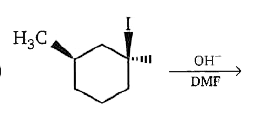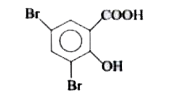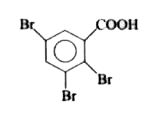When a pair of electron from is transported through respiratory ETS, it results in the formation of
2 mol. Of ATP
4 mol. Of ATP
3 mol. Of ATP
5 mol. Of ATP.
The correct Answer is:C
To solve the question regarding the number of ATP molecules formed when a pair of electrons from NADH(H⁺) is transported through the respiratory electron transport system (ETS), we can follow these steps:
1. Understanding NADH and its Role:
- NADH is a reduced coenzyme produced during glycolysis and the Krebs cycle. It carries electrons to the electron transport system.
2. Electron Transport System (ETS):
- The ETS is a series of protein complexes located in the inner mitochondrial membrane. It facilitates the transfer of electrons from NADH and FADH₂ to oxygen, which ultimately leads to ATP production.
3. Oxidation of NADH:
- When NADH donates its electrons to the ETS, it gets oxidized back to NAD⁺. This process releases energy.
4. ATP Production:
- The energy released during the oxidation of NADH is used to pump protons (H⁺ ions) across the mitochondrial membrane, creating a proton gradient.
5. Chemiosmosis:
- The protons flow back into the mitochondrial matrix through ATP synthase, a process known as chemiosmosis, which drives the conversion of ADP to ATP.
6. ATP Yield from NADH:
- Each pair of electrons from one molecule of NADH typically results in the production of approximately 3 ATP molecules when passed through the ETS.
7. Final Answer:
- Therefore, when a pair of electrons from NADH(H⁺) is transported through the respiratory ETS, it results in the formation of 3 molecules of ATP.
Conclusion:
The answer to the question is that the transport of a pair of electrons from NADH through the respiratory ETS results in the formation of 3 moles of ATP.
---
- NADH is a reduced coenzyme produced during glycolysis and the Krebs cycle. It carries electrons to the electron transport system.
- The ETS is a series of protein complexes located in the inner mitochondrial membrane. It facilitates the transfer of electrons from NADH and FADH₂ to oxygen, which ultimately leads to ATP production.
- When NADH donates its electrons to the ETS, it gets oxidized back to NAD⁺. This process releases energy.
- The energy released during the oxidation of NADH is used to pump protons (H⁺ ions) across the mitochondrial membrane, creating a proton gradient.
- The protons flow back into the mitochondrial matrix through ATP synthase, a process known as chemiosmosis, which drives the conversion of ADP to ATP.
- Each pair of electrons from one molecule of NADH typically results in the production of approximately 3 ATP molecules when passed through the ETS.
- Therefore, when a pair of electrons from NADH(H⁺) is transported through the respiratory ETS, it results in the formation of 3 molecules of ATP.
The answer to the question is that the transport of a pair of electrons from NADH through the respiratory ETS results in the formation of 3 moles of ATP.
Topper's Solved these Questions
- RESPIRATIONBOOK - DINESH PUBLICATION ENGLISHCHAPTER - RESPIRATIONEXERCISE - REVISION QUESTIONS FROM COMPETITIVE EXAMS.
436 Videos
- RESPIRATIONBOOK - DINESH PUBLICATION ENGLISHCHAPTER - RESPIRATIONEXERCISE - CHECK YOUR GRASP
20 Videos
- REPTILIA-CREEPING VERTEBRATESBOOK - DINESH PUBLICATION ENGLISHCHAPTER - REPTILIA-CREEPING VERTEBRATESEXERCISE - CHECK YOUR GRASP
10 Videos
- ROOTBOOK - DINESH PUBLICATION ENGLISHCHAPTER - ROOTEXERCISE - CHECK YOUR GRASP
10 Videos
Similar Questions
Knowledge Check
Assertion : In electron transport system, the electrons are passed on to oxygen resulting in the formation of H2O
Reason : Oxygen is the ultimate acceptor of electrons.AIf both assertion and reason are true and reason is the correct explanation of assertionBIf both assertion and reason are true but reason is not the correct explanation of assertionCIf assertion is true but reason is falseDIf both assertion and reason are falseWhich reaction results in the formation ofa pair of enantiomers ?
A B
B C
C D
D
The action of Br2/H2O on salicylic acid results in the formation of :
A B
B C
C D
D
When a lysosome fuses with a phagosomes/food, it result in the formation of
View SolutionTwo pairs of electrons passing from NADH molecules to oxygen generate
View SolutionIn ETS, electrons moves from
View SolutionWhen nuclear division takes place without cytoplasmic division, it results in the formation of
View SolutionDuring electron transport system (ETS) electron transport proceeds from carriers that have ________redox potential to those having_____redox potential. This electront transport down the energy gradient leads to the formation of ATP from ADP and Pi, which is referred to as___________.
View Solution
